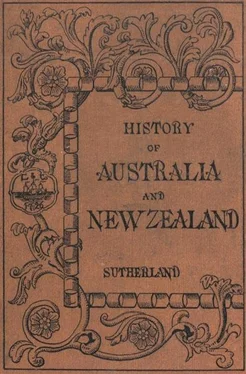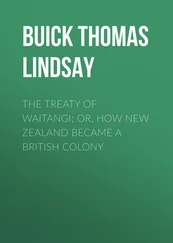Meantime the travellers passed a summer such as few men have ever experienced. The heat was sometimes as high as 130 deg. in the shade, and in the sun it was altogether intolerable. They were unable to write, as the ink dried at once on their pens; their combs split; their nails became brittle and readily broke, and if they touched a piece of metal it blistered their fingers. In their extremity they dug an underground room, deep enough to be beyond the dreadful furnace-glow above. Here they spent many a long day, as month after month passed without a shower of rain. Sometimes they watched the clouds gather, and they could hear the distant roll of thunder, but there fell not a drop to refresh the dry and dusty desert. The party began to grow thin and weak; Mr. Poole became ill with scurvy, and from day to day he sank rapidly. At length, when winter was again approaching, a gentle shower moistened the plain; and, as the only chance of saving the life of Poole, half of the party was sent to carry him quickly back to the Darling. They had been gone only a few hours when a messenger rode back with the news that he was already dead. The mournful cavalcade returned, bearing his remains, and a grave was dug in the wilderness. A tree close by, on which his initials were cut, formed the only memorial of the hapless explorer.
7. Journey to the Centre.—Shortly afterwards there came a succession of wet days, and, as there was now an abundance of water, the whole party once more set off; having travelled north-west for sixty-one miles farther, they formed a new depôt, and made excursions to explore the country in the neighbourhood. MʻDouall Stuart crossed over to Lake Torrens; while Sturt, with Dr. Browne and three men, pushing to the north, discovered the Strzelecki Creek, a stream which flows through very agreeable country. But as they proceeded farther to the north their troubles began again; they came upon a region covered with hill after hill of fiery red sand, amid which lay lagoons of salt and bitter water. They toiled over this weary country in hopes that a change for the better might soon appear; but when they reached the last hill, they had the mortification to see a great plain, barren, monotonous and dreary, stretching with a purple glare as far as the eye could reach on every side. This plain was called by Sturt the “Stony Desert,” for, on descending, he found it covered with innumerable pieces of quartz and sandstone, among which the horses wearily stumbled. Sturt wished to penetrate as far as the tropic of Capricorn; but summer was again at hand, their water was failing, and they could find neither stream nor pool. When the madness of any farther advance became apparent, Sturt, with his head buried in his hands, sat for an hour in bitter disappointment. After toiling so far, and reaching within 150 miles of his destination, to be turned back for the want of a little water was a misfortune very hard to bear, and, but for his companions, he would have still gone forward and perished. As they hastened back their water was exhausted, and they were often in danger of being buried by moving hills of sand; but at length they reached the depôt, having traversed 800 miles during the eight weeks of their absence.
It was not long before Sturt started again, taking with him MʻDouall Stuart as his companion. On this trip he suffered the same hardships, but had the satisfaction of discovering a magnificent stream, which he called Cooper’s Creek. On crossing this creek he again entered the Stony Desert, and was once more compelled reluctantly to retrace his steps. When he reached the depôt he was utterly worn out. He lay in bed for a long time, tenderly nursed by his companions; and, when the whole party set out on its return to the settled districts, he had to be lifted in and out of the dray in which he was carried. As they neared their homes his sight began to fail. The glare of the burning sands had destroyed his eyes, and he passed the remainder of his days in darkness. His reports of the arid country gave rise to the opinion that the whole interior of Australia was a desert; but this was afterwards found to be far from correct.
8. Leichardt.—Allan Cunningham’s discoveries extended over the northern parts of New South Wales and the southern districts of Queensland. But all the north-eastern parts of the continent were left unexplored until 1844, when an intrepid young German botanist, named Ludwig Leichardt, made known this rich and fertile country. With five men he started from Sydney, and, passing through splendid forests and magnificent pasture lands, he made his way to the Gulf of Carpentaria, discovering and following up many large rivers—the Fitzroy, with its tributaries—the Dawson, the Isaacs and the Mackenzie; the Burdekin, with several of its branches; then the Mitchell; and, lastly, the Gilbert. He also crossed the Flinders and Albert, without knowing that, a short time previously, these rivers had been discovered and named by Captain Stokes, who was exploring the coasts in a British war-ship. Having rounded the gulf, he discovered the Roper, and followed the Alligator River down to Van Diemen’s Gulf, where a vessel was waiting to receive his party. On his return to Sydney the utmost enthusiasm prevailed; for Leichardt had made known a wide stretch of most valuable country. The people of Sydney raised a subscription of £1,500, and the Government rewarded his services with £1,000. Leichardt was of too ardent a nature to remain content with what he had already done; and, in 1847, he again set out to make further explorations in the north of Queensland. On this occasion, however, he was not so successful. He had taken with him great flocks of sheep and goats, and they impeded his progress so much that, after wandering over the Fitzroy Downs for about seven months, he was forced to return. In 1848 he organised a third expedition, to cross the whole country from east to west. He proposed to start from Moreton Bay, and to take two years in traversing the centre of the continent, so as to reach the Swan River settlement. He set out with a large party, and soon reached the Cogoon River, a tributary of the Condamine. From this point he sent to a friend in Sydney a letter, in which he described himself as in good spirits, and full of hope that the expedition would be a success. He then started into the wilderness, and was lost for ever from men’s view. For many years parties were, from time to time, sent out to rescue the missing explorers, if perchance they might still be wandering with the blacks in the interior; but no traces of the lost company have ever been brought to light.
9. Mitchell.—Whilst Leichardt was absent on his first journey, Sir Thomas Mitchell—the discoverer of the Glenelg—had prepared an expedition for the exploration of Queensland. Having waited till the return of Leichardt, in order not to go over the same ground, he set out towards the north, and, after discovering the Culgoa and Warrego—two important tributaries of the Darling—he turned to the west. He travelled over a great extent of level country, and then came upon a river which somewhat puzzled him. He followed the current for 150 miles, and it seemed to flow steadily towards the heart of the continent. He thought that its waters must eventually find their way to the sea, and would, therefore, after a time, flow north to the Indian Ocean. If that were the case, the river—which the natives called the Barcoo—must be the largest stream on the northern coast, and he concluded that it was identical with the Victoria, whose mouth had been discovered about nine years before by Captain Stokes. He, therefore, provisionally gave it the name of the Victoria River.
10. Kennedy.—On the return of Mitchell, the further prosecution of exploration in these districts was left to his assistant-surveyor—Edmund Kennedy—who, having been sent to trace the course of the supposed Victoria River, followed its banks for 150 miles below the place where Mitchell had left it. He was then forced to return through want of provisions; but he had gone far enough, however, to show that this stream was only the higher part of Cooper’s Creek, discovered not long before by Captain Sturt. This river has a course of about 1,200 miles; and it is, therefore, the largest of Central Australia. But its waters spread out into the broad marshes of Lake Eyre, and are there lost by evaporation.
Читать дальше












